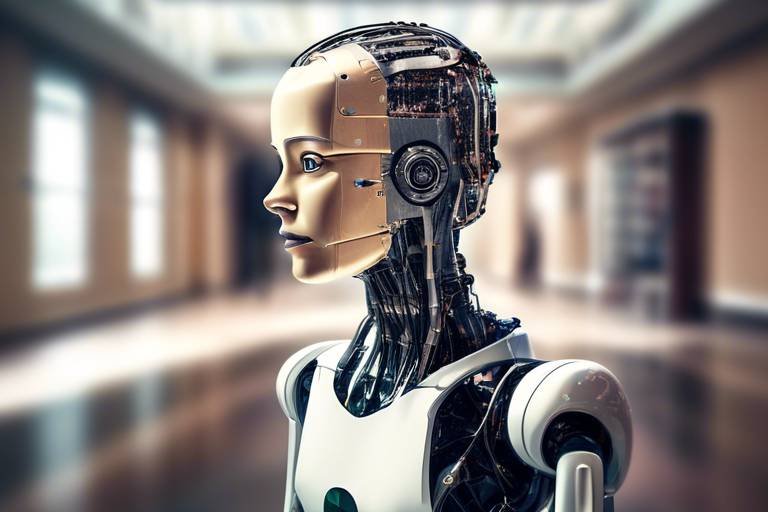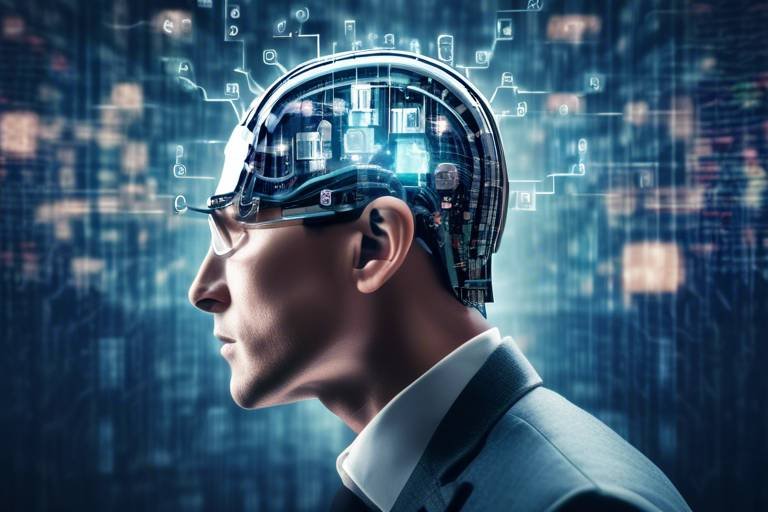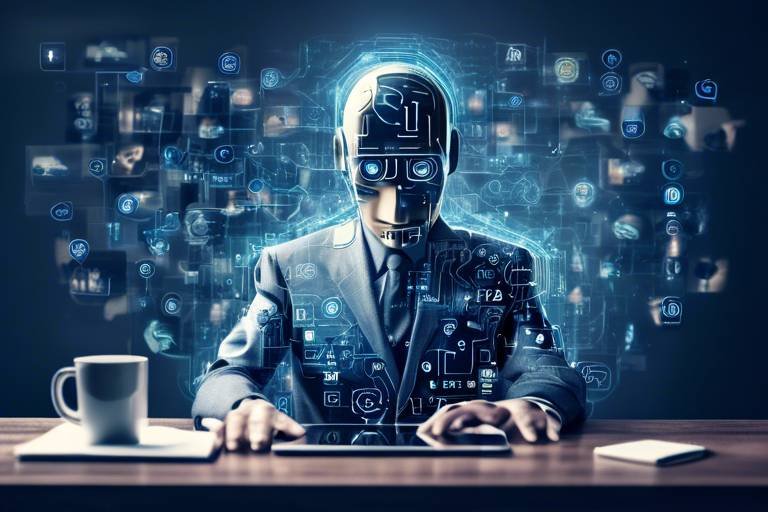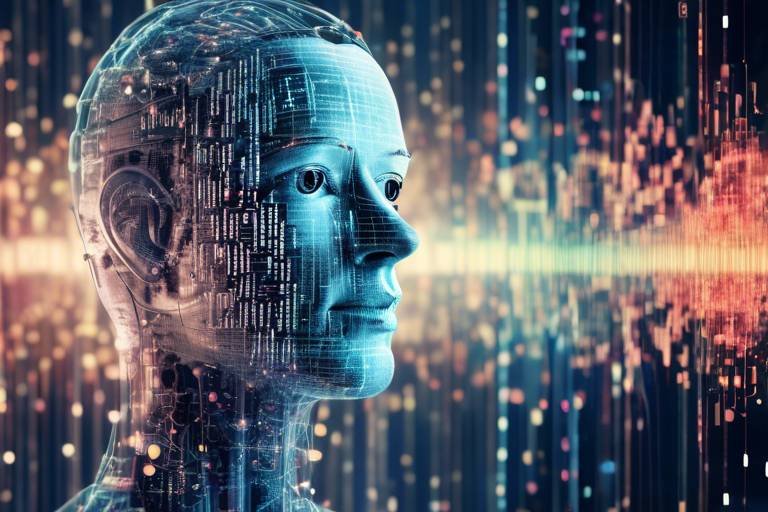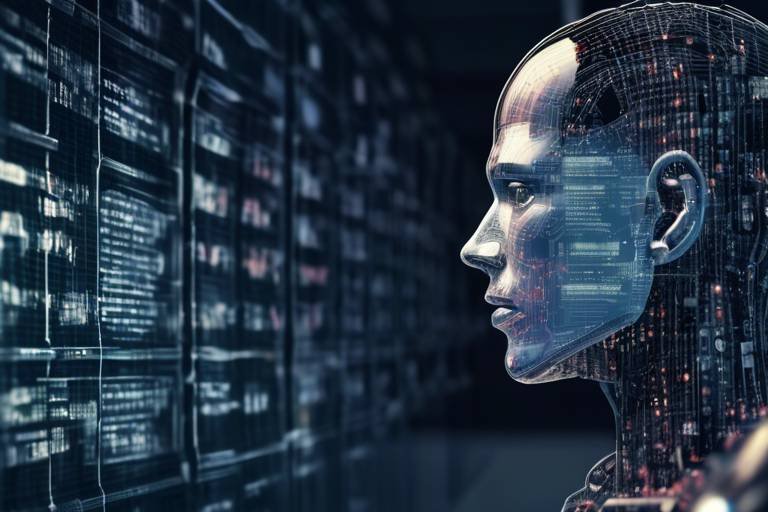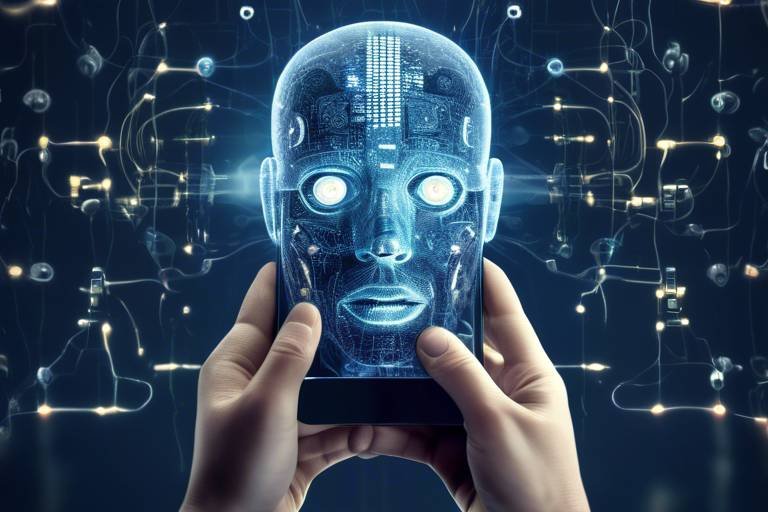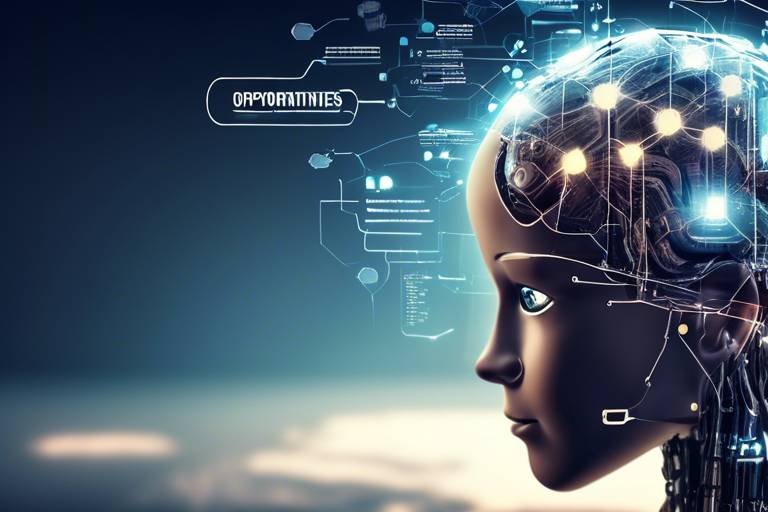The Adoption of AI in Higher Education
Artificial Intelligence (AI) is not just a buzzword; it's a revolutionary force reshaping the landscape of higher education. Imagine walking into a classroom where the curriculum is tailored specifically to your learning style, or receiving instant feedback on your assignments, all thanks to AI. This technology is making waves across universities and colleges, enhancing the educational experience for both students and educators alike. But what does this really mean for the future of learning? In this article, we will dive deep into the transformative role of AI in higher education, examining its myriad benefits, the challenges that come with its implementation, and the exciting trends that lie ahead.
First off, let’s talk about the benefits of integrating AI into educational frameworks. One of the most significant advantages is the ability to provide personalized learning experiences. With AI, educational platforms can analyze a student’s performance in real-time, adapting the curriculum to suit individual needs. This means that whether you're a fast learner or someone who needs a bit more time to grasp concepts, AI can help you succeed. Additionally, AI streamlines administrative tasks, allowing educators to focus more on teaching and less on paperwork. Imagine a world where grading and scheduling are automated, freeing up precious time for educators to engage with their students more meaningfully.
However, it’s not all sunshine and rainbows. The journey towards AI integration is fraught with challenges. One major hurdle is the issue of data privacy. With the increasing reliance on digital platforms, ensuring the security of student information is paramount. Educational institutions must navigate a complex web of regulations to protect sensitive data while also utilizing AI technologies effectively. Breaches can lead to severe legal repercussions and erode trust among students and parents. Building that trust requires transparency about how data is used and the benefits that AI brings to the educational experience.
Moreover, there’s often a resistance to change from educators and administrators. Change can be intimidating, and many may feel overwhelmed by the prospect of adopting new technologies. It’s essential to address these concerns head-on, providing adequate training and support to foster a collaborative environment. After all, the goal is to enhance the educational experience, not to replace the invaluable human touch that educators provide.
Looking ahead, the future of AI in higher education is incredibly promising. We are witnessing a shift towards adaptive learning technologies that can modify educational content based on individual student needs. This not only enhances learning efficiency but also promotes student autonomy, allowing learners to take charge of their educational journeys. Furthermore, AI-driven career guidance systems are on the horizon, which can analyze a student’s skills and the job market to offer tailored advice, thereby enhancing employability.
In conclusion, the adoption of AI in higher education is a double-edged sword. While it offers unparalleled benefits that can revolutionize learning, it also presents challenges that must be carefully navigated. As we embrace this technology, it’s crucial to prioritize data privacy, build trust among stakeholders, and support educators through the transition. The future is bright, and with the right approach, AI can be a powerful ally in shaping the next generation of learners.
- What are the main benefits of AI in higher education?
AI provides personalized learning experiences, enhances administrative efficiency, and improves student engagement, leading to better academic outcomes. - What challenges do institutions face when implementing AI?
Key challenges include data privacy concerns, resistance to change, and the need for significant investment in technology. - How can institutions ensure data privacy with AI?
Institutions must adhere to regulations, implement robust data protection policies, and maintain transparency with stakeholders about data usage. - What future trends can we expect in AI and education?
Future trends include increased automation, adaptive learning technologies, and AI-driven career guidance systems that support students in their career paths.

The Benefits of AI in Education
The integration of artificial intelligence (AI) in higher education is nothing short of revolutionary. Imagine walking into a classroom where every student receives a customized learning experience tailored just for them. AI makes this possible by analyzing individual learning patterns and adapting content to suit each student's unique needs. This personalized approach not only enhances understanding but also fosters a more engaging learning environment. Students can learn at their own pace, revisiting challenging concepts until they feel confident, which ultimately leads to improved academic performance.
Beyond personalized learning, AI brings significant administrative efficiency to educational institutions. For instance, AI-driven systems can automate routine tasks such as grading assignments, managing schedules, and processing admissions. This reduction in administrative burden allows educators to focus more on teaching and mentoring students, rather than getting bogged down in paperwork. Imagine a world where educators can dedicate more time to engaging with students, leading to a more vibrant and dynamic educational experience.
Another noteworthy benefit of AI in education is its ability to enhance student engagement. Interactive AI tools, such as chatbots and virtual assistants, provide students with immediate support and resources. These tools can answer questions, provide feedback on assignments, and even suggest additional resources for deeper learning. The result? Students feel more connected and supported throughout their educational journey. Furthermore, AI can analyze student interactions and engagement levels, allowing institutions to identify at-risk students and intervene before they fall behind.
To illustrate the impact of AI in education, consider the following table that outlines key benefits:
| Benefit | Description |
|---|---|
| Personalized Learning | AI tailors educational content to meet individual student needs, enhancing learning efficiency. |
| Administrative Efficiency | Automation of routine tasks allows educators to focus more on teaching and mentoring. |
| Enhanced Student Engagement | AI tools provide immediate support, fostering a more connected learning environment. |
In addition to these benefits, AI can also facilitate data-driven decision-making for educational institutions. By analyzing vast amounts of data, AI can identify trends and insights that can inform curriculum development and resource allocation. For example, if data shows that students struggle with a particular topic, educators can adjust their teaching strategies or provide additional resources to address the issue. This proactive approach not only improves educational outcomes but also ensures that institutions remain competitive in an ever-evolving academic landscape.
In conclusion, the benefits of AI in higher education are profound and far-reaching. From personalized learning experiences that cater to individual students to enhanced administrative efficiency that frees up educators' time, AI is transforming the educational landscape. As we embrace these innovations, we must also remain mindful of the challenges that accompany them, ensuring that we create a balanced and equitable educational environment for all.
- What is AI in education? AI in education refers to the use of artificial intelligence technologies to enhance learning experiences, improve administrative processes, and support educators and students.
- How does AI personalize learning? AI personalizes learning by analyzing individual student data and adapting educational content to fit their unique learning styles and needs.
- What are some examples of AI tools used in education? Examples include AI-driven tutoring systems, chatbots for student support, and adaptive learning platforms that adjust content based on student performance.

Challenges of Implementing AI
Implementing artificial intelligence (AI) in higher education is not without its hurdles. While the potential benefits are enticing, institutions often find themselves grappling with a variety of challenges. One of the most pressing issues is data privacy. As educational institutions collect vast amounts of data from students, ensuring this information remains secure is paramount. A breach could not only compromise student trust but also lead to severe legal repercussions. The stakes are high, and the conversation around data ethics is more critical than ever.
Another significant challenge is the resistance to change from educators and administrators. Many faculty members have spent years honing their traditional teaching methods and may be hesitant to adopt new technologies. This resistance can stem from a fear of the unknown, concerns about job security, or simply a lack of understanding about how AI can enhance their teaching practices. To combat this, institutions must prioritize training and support for their staff. By providing comprehensive resources and fostering an environment of collaboration, educators can be encouraged to embrace AI as a valuable tool rather than viewing it as a threat.
Additionally, the need for substantial investment in technology cannot be overlooked. Implementing AI solutions often requires significant financial resources, which can be a barrier for many institutions, especially those with tight budgets. This investment isn't just about purchasing software; it also involves upgrading infrastructure, training personnel, and maintaining systems over time. Institutions must weigh the costs against the potential benefits, and this can lead to difficult decisions about resource allocation.
Ensuring the privacy and security of student data is crucial when implementing AI technologies. Breaches can lead to significant legal and ethical implications for educational institutions. For instance, the consequences of a data breach can include:
- Legal action from affected students
- Loss of accreditation
- Severe financial penalties
To mitigate these risks, institutions must adopt robust data protection policies and practices. This includes implementing encryption, regular audits, and training staff on data handling protocols.
Navigating the complex landscape of regulations regarding data usage is another challenge. Educational institutions must ensure compliance with various laws, such as the Family Educational Rights and Privacy Act (FERPA) in the United States, which governs the access to student education records. Developing comprehensive policies that align with these regulations while leveraging AI technologies effectively is essential for maintaining institutional integrity.
Establishing trust among students, faculty, and parents is essential for successful AI adoption. Institutions need to be transparent about how data is being used and the benefits AI tools bring to education. This transparency can help alleviate concerns and build confidence in the technology. Regular communication and community engagement initiatives can foster a sense of partnership, making stakeholders feel included in the decision-making process.
Resistance from educators and administrators can significantly hinder AI implementation. Understanding their concerns and providing adequate training and support is vital for fostering acceptance and collaboration. By involving educators in the planning phase of AI integration, institutions can address specific concerns and tailor solutions that meet the needs of both faculty and students. This collaborative approach not only eases the transition but also enhances the overall effectiveness of AI in education.
Q1: What are the main challenges of implementing AI in higher education?
A1: The main challenges include data privacy concerns, resistance to change from educators, and the need for substantial investment in technology.
Q2: How can institutions ensure data security when using AI?
A2: Institutions can implement robust data protection policies, use encryption, conduct regular audits, and train staff on data handling protocols.
Q3: Why is there resistance to AI among educators?
A3: Educators may fear the unknown, be concerned about job security, or lack understanding of how AI can enhance their teaching practices.
Q4: What role does transparency play in AI adoption?
A4: Transparency helps build trust among stakeholders by clarifying how data is used and the benefits AI tools bring to education.

Data Privacy and Security
When we talk about the integration of artificial intelligence in higher education, one of the most pressing concerns that arises is . With AI systems collecting vast amounts of data to enhance learning experiences, educational institutions must tread carefully to ensure that student information remains protected. Imagine your personal data being exposed due to a security breach; it’s a nightmare scenario that no one wants to face. The stakes are high, and the implications can be both legal and ethical.
To put it simply, the moment a student enrolls in a university, they become part of a complex web of data collection. From academic performance to personal interests, every bit of information can be valuable to AI systems aiming to create tailored educational experiences. However, this also means that institutions must implement robust security measures to prevent unauthorized access to sensitive data. The challenge lies in finding the perfect balance between utilizing data for enhanced learning and ensuring that students' privacy is not compromised.
Moreover, educational institutions must navigate a labyrinth of regulatory compliance issues. Laws such as the Family Educational Rights and Privacy Act (FERPA) in the U.S. set stringent guidelines on how educational data should be handled. Institutions need to develop comprehensive policies that not only comply with these regulations but also foster a culture of transparency. This involves educating stakeholders—students, faculty, and parents—about how their data is being used and the measures in place to protect it.
Building trust is a crucial aspect of this process. If students and their families feel that their data is not secure, they may be resistant to the adoption of AI technologies in their learning environments. Therefore, institutions must prioritize transparency in their data practices. This could involve regular updates on data usage policies and the implementation of user-friendly consent forms that clearly outline how personal information will be utilized. By doing so, institutions can create an atmosphere of trust and cooperation, which is essential for the successful deployment of AI tools.
In summary, while the potential of AI in higher education is immense, the challenges surrounding cannot be overlooked. Institutions must invest in advanced security measures, educate their communities about data practices, and comply with regulatory standards. Only then can they harness the full power of AI without compromising the privacy and security of their students.
- What are the main concerns regarding data privacy in AI?
Data privacy concerns primarily revolve around unauthorized access to sensitive student information, potential data breaches, and compliance with legal regulations. - How can educational institutions ensure data security?
Institutions can implement advanced security measures, such as encryption, regular audits, and comprehensive data usage policies, to protect student information. - What role does transparency play in data privacy?
Transparency helps build trust among students and stakeholders by clearly communicating how data is collected, used, and protected.

Regulatory Compliance
In the rapidly evolving landscape of higher education, has emerged as a critical concern when integrating artificial intelligence (AI) technologies. Educational institutions are tasked with navigating a maze of complex regulations that govern the use of data, particularly sensitive student information. This is not just a bureaucratic hurdle; it's a fundamental aspect of maintaining the integrity and trustworthiness of educational environments. Without proper compliance, institutions risk facing serious legal repercussions and damage to their reputations.
To effectively leverage AI while ensuring compliance, institutions must develop robust policies and practices that address the following key areas:
- Data Protection Laws: Institutions must adhere to laws such as the Family Educational Rights and Privacy Act (FERPA) in the U.S., which protects the privacy of student education records.
- GDPR Compliance: For institutions operating in or with students from the European Union, compliance with the General Data Protection Regulation (GDPR) is essential. This regulation emphasizes the importance of obtaining explicit consent before processing personal data.
- Institutional Policies: Each institution should create internal policies that outline how AI technologies will be used, ensuring transparency and accountability in data handling.
Moreover, it is crucial for institutions to engage in continuous training and education for their staff and faculty. This not only helps in understanding the legal landscape but also fosters a culture of compliance within the institution. By equipping educators and administrators with the necessary knowledge, they can confidently implement AI solutions without falling into compliance pitfalls.
In summary, navigating the regulatory landscape is not just about avoiding penalties; it's about building a framework that supports ethical AI use in education. Institutions that prioritize compliance will not only protect themselves legally but will also enhance their credibility and foster trust among all stakeholders involved.
- What are the key regulations governing AI in education? The primary regulations include FERPA in the U.S. and GDPR in the EU, which focus on data privacy and protection.
- How can institutions ensure compliance? Institutions can ensure compliance by developing clear policies, providing training for staff, and regularly reviewing their practices against current regulations.
- What are the consequences of non-compliance? Non-compliance can lead to legal penalties, loss of funding, and damage to the institution's reputation.

Building Trust with Stakeholders
Building trust with stakeholders in the realm of artificial intelligence (AI) in higher education is not just a nice-to-have; it’s a necessity. Imagine walking into a classroom where students are hesitant to engage with AI tools because they fear their data might be misused. This scenario underscores the importance of transparency and communication. Institutions must actively work to reassure students, faculty, and parents that their data will be handled with the utmost care. This involves not only explaining how AI works but also demonstrating the tangible benefits it can bring to the educational experience.
One effective way to foster trust is through open communication. Educational institutions can hold workshops and informational sessions to discuss AI technologies, their applications, and the safeguards in place to protect student data. This kind of engagement helps demystify AI and allows stakeholders to voice their concerns, which can be addressed directly. Moreover, institutions should consider creating a dedicated AI ethics committee that includes representatives from all stakeholder groups. This committee can oversee AI implementations and ensure that ethical considerations are at the forefront of decision-making.
Additionally, institutions should provide clear policies regarding data usage. This includes outlining what data will be collected, how it will be used, and who will have access to it. By being upfront about these processes, stakeholders can feel more secure in the knowledge that their information is being managed responsibly. Here’s a quick look at some key elements that should be included in these policies:
| Policy Element | Description |
|---|---|
| Data Collection | What types of data are collected and why? |
| Data Usage | How will the data be used to improve educational outcomes? |
| Data Access | Who will have access to this data and under what circumstances? |
| Data Security | What measures are in place to protect student data? |
Furthermore, building trust is also about demonstrating positive outcomes. When stakeholders can see the benefits of AI in action—such as improved learning experiences, personalized feedback, and enhanced career readiness—they are more likely to embrace these technologies. Success stories and case studies can serve as powerful tools to illustrate the effectiveness of AI, making it easier for stakeholders to visualize the potential impact on their educational journeys.
Finally, ongoing support and training for both educators and students can play a pivotal role in building trust. By investing in professional development and providing resources for students to learn about AI, institutions can create an environment where everyone feels confident in using these tools. This not only promotes a culture of innovation but also reinforces the idea that AI is a partner in the educational process, not a replacement for human interaction and guidance.
- What are the main benefits of AI in higher education? AI can personalize learning experiences, enhance administrative efficiency, and improve student engagement.
- How can institutions ensure data privacy when implementing AI? By establishing clear data usage policies and maintaining transparency with stakeholders.
- What challenges do educators face when adopting AI? Resistance to change and the need for proper training are significant hurdles.
- What future trends can we expect in AI and education? Increased automation, adaptive learning technologies, and AI-driven career guidance systems are on the horizon.

Resistance to Change
In the realm of higher education, the adoption of artificial intelligence (AI) is often met with a wave of resistance. This reluctance can stem from a variety of factors, primarily rooted in the fear of the unknown. Educators and administrators may feel apprehensive about integrating AI into their teaching practices, fearing it could disrupt their established methods. It's akin to trying to convince a seasoned chef to swap their beloved stove for a high-tech induction cooktop—while the latter may offer precision and efficiency, the chef's attachment to traditional cooking techniques can create a barrier to change.
One of the main reasons for this resistance is the concern about job security. Educators may worry that AI could replace their roles, leading to a sense of vulnerability. However, it's crucial to recognize that AI is not designed to replace teachers; rather, it aims to enhance their capabilities. By automating administrative tasks and providing personalized insights into student performance, AI can free up educators to focus on what they do best: teaching and mentoring students.
Moreover, the lack of adequate training can significantly contribute to this resistance. Many educators may not feel equipped to utilize AI tools effectively. Without proper training and ongoing support, the fear of inadequacy can lead to a reluctance to embrace these technologies. Institutions must prioritize professional development and create a culture of continuous learning, where educators feel empowered to explore and integrate AI into their curriculum.
Additionally, the cultural shift that accompanies the adoption of AI can be daunting. Educational institutions often have deeply ingrained traditions and practices that have been successful over the years. Introducing AI requires a shift in mindset, which can be met with skepticism. It's essential for leadership to communicate the benefits of AI clearly and involve educators in the decision-making process. By fostering an inclusive environment where feedback is valued, institutions can gradually build trust and reduce resistance.
To further understand the dynamics of resistance to change, consider the following factors that can influence educators' acceptance of AI:
| Factor | Impact on Resistance |
|---|---|
| Job Security Concerns | Higher resistance due to fear of replacement |
| Lack of Training | Increased anxiety and reluctance to adopt |
| Institutional Culture | Resistance from traditional practices |
| Communication of Benefits | Lower resistance when benefits are clear |
In conclusion, addressing resistance to change in higher education is not just about introducing AI tools; it's about fostering a supportive environment that encourages educators to embrace innovation. By understanding their concerns, providing adequate training, and clearly communicating the benefits, institutions can pave the way for a smoother transition into an AI-enhanced educational landscape.
- What are the main reasons for resistance to AI in education? Resistance often stems from job security concerns, lack of training, and a reluctance to change established practices.
- How can institutions support educators in adopting AI? Institutions can provide professional development, create an inclusive culture, and communicate the benefits of AI clearly.
- Is AI going to replace teachers? No, AI is meant to enhance the teaching experience, not replace educators.
- What role does communication play in reducing resistance? Clear communication about the benefits of AI can help alleviate fears and encourage acceptance among educators.

Future Trends in AI and Education
The future of artificial intelligence (AI) in higher education is not just a distant dream; it’s a vibrant reality that is unfolding before our eyes. As we stride into this new era, we can expect to see **significant advancements** that will transform how students learn and educators teach. Imagine a classroom where every student receives a customized learning experience tailored specifically to their needs—that's the power of AI. With adaptive learning technologies, educational content can be adjusted in real-time, ensuring that each student can learn at their own pace and style. This is akin to having a personal tutor available 24/7, ready to assist whenever needed.
One of the most exciting trends is the rise of **adaptive learning technologies**. These systems utilize AI algorithms to analyze a student's performance and preferences, allowing for a unique educational experience. For instance, if a student struggles with a particular concept in mathematics, the AI can provide additional resources and exercises specifically designed to reinforce that area. This not only enhances learning efficiency but also promotes student autonomy, as learners can take charge of their educational journey. The result? Enhanced engagement and improved academic performance.
Moreover, AI is set to revolutionize career services within higher education. Imagine a system that not only understands a student’s skills and interests but also keeps a pulse on current job market trends. This is where **AI-driven career guidance** comes into play. By analyzing vast amounts of data, AI can provide personalized career advice, suggest relevant internships, and even assist with job placements. It’s like having a career coach who knows the ins and outs of the job market, guiding students toward promising opportunities that align with their skills and aspirations.
As we look ahead, the implications of these technologies are profound. They promise to create a more inclusive educational environment, where every student, regardless of their background or learning style, can thrive. However, this transition won't be without its challenges. Educational institutions will need to invest in technology and training to ensure that both students and educators are equipped to navigate this new landscape. It’s a thrilling prospect, but it requires a collective effort to make it a reality.
- What is adaptive learning technology? Adaptive learning technology uses AI to tailor educational content to meet the individual needs of students, enhancing their learning experience.
- How can AI improve career services in higher education? AI can analyze student skills and market trends to provide personalized career advice and job placement support, helping students enhance their employability.
- What are the potential challenges of implementing AI in education? Challenges include data privacy concerns, resistance to change from educators, and the need for substantial investment in technology.
- Will AI replace teachers in the classroom? No, AI is designed to augment the teaching process, providing support and personalized learning experiences while teachers continue to play a crucial role in education.

Adaptive Learning Technologies
Adaptive learning technologies are reshaping the landscape of education, making it more personalized and effective than ever before. Imagine walking into a classroom where every lesson is tailored just for you—sounds like a dream, right? Well, with the power of artificial intelligence, this dream is quickly becoming a reality. These technologies analyze a student's performance in real-time and adjust the content accordingly, ensuring that learners are not just passively absorbing information but actively engaging with it.
One of the most exciting aspects of adaptive learning is its ability to cater to different learning styles and paces. For instance, if a student struggles with algebra, the system can provide additional resources, practice problems, and even interactive tutorials to strengthen their understanding. Conversely, for those who grasp concepts quickly, the technology can accelerate their learning path, introducing more advanced topics sooner. This dynamic approach not only enhances comprehension but also keeps students motivated and invested in their education.
Furthermore, adaptive learning technologies can help identify gaps in knowledge and skills, allowing educators to intervene promptly. Instead of waiting for mid-term exams to discover that a student is falling behind, teachers can receive immediate feedback on student performance. This proactive stance enables educators to offer targeted support, ensuring that no student is left behind. The result? A classroom environment that promotes equitable learning opportunities for all students.
But how does this all work? At its core, adaptive learning relies on sophisticated algorithms and data analytics. These systems gather a wealth of information, from quiz scores to time spent on each topic, and use this data to create a comprehensive learning profile for each student. This profile evolves over time, continually refining the educational experience. In essence, adaptive learning is like having a personal tutor available 24/7, adjusting to your unique needs and preferences.
As we look ahead, the integration of adaptive learning technologies in higher education is set to expand. Educational institutions are increasingly recognizing the potential of these tools to enhance student engagement and improve academic outcomes. However, it's essential to approach this integration thoughtfully. Institutions must invest in the necessary infrastructure, training, and resources to ensure that both students and educators can fully leverage these technologies.
In conclusion, adaptive learning technologies represent a significant leap forward in educational practices. By providing personalized learning experiences, these systems not only enhance academic performance but also foster a deeper love for learning. As we continue to embrace this technological evolution, the future of education looks brighter than ever, paving the way for a generation of learners who are equipped to thrive in an increasingly complex world.
- What are adaptive learning technologies? Adaptive learning technologies are systems that use artificial intelligence to tailor educational content to individual student needs, enhancing learning efficiency.
- How do adaptive learning systems work? They analyze student performance in real-time and adjust the content accordingly, providing personalized resources and support.
- What benefits do adaptive learning technologies offer? They promote personalized learning experiences, improve student engagement, and help identify gaps in knowledge for timely intervention.
- Are adaptive learning technologies widely used in higher education? Their use is growing rapidly as educational institutions recognize their potential to enhance academic outcomes.

AI-Driven Career Guidance
Imagine stepping into a world where your career path is mapped out for you, tailored specifically to your skills, interests, and the ever-changing job market. is not just a futuristic concept; it’s becoming a reality in higher education, transforming how students approach their career journeys. By harnessing the power of artificial intelligence, educational institutions can offer personalized career advice that resonates with each student’s unique profile.
At its core, AI-driven career guidance analyzes vast amounts of data, including student performance, skill sets, and current job market trends. This analysis allows AI systems to provide insights that are not only timely but also relevant. For instance, if a student excels in data analytics, the AI can highlight emerging job roles in that field, suggest relevant internships, and even recommend courses to bolster their skills. It’s like having a personal career coach available 24/7, guiding students through their academic and professional landscapes.
Moreover, the integration of AI in career services can significantly enhance the employability of graduates. By utilizing algorithms that predict job market trends, institutions can proactively adjust their curricula, ensuring that students are equipped with the skills that employers demand. This adaptability is crucial in today’s fast-paced world, where industries evolve rapidly, and what is relevant today may be obsolete tomorrow.
To illustrate the impact of AI-driven career guidance, consider the following table that outlines some of the key benefits:
| Benefit | Description |
|---|---|
| Personalized Recommendations | AI analyzes individual student data to provide tailored career advice and opportunities. |
| Market Trend Analysis | Continuous monitoring of job market trends helps students align their skills with industry needs. |
| Skill Gap Identification | AI identifies gaps in student skills compared to market demands, recommending additional training. |
| Enhanced Networking Opportunities | AI can connect students with industry professionals and mentors based on their career interests. |
Additionally, AI-driven systems can facilitate networking opportunities by connecting students with professionals in their desired fields. Imagine being matched with a mentor who not only shares your career interests but also has a wealth of experience to guide you. This kind of personalized connection can be invaluable, providing insights that textbooks simply cannot offer.
However, while the benefits are clear, it’s essential to approach AI-driven career guidance with a critical eye. Questions regarding data privacy, the accuracy of AI recommendations, and the potential for bias in algorithms must be addressed. Educational institutions need to ensure that the AI tools they implement are not only effective but also ethical, maintaining transparency with students about how their data is used. Building trust in these systems is crucial for their success.
In conclusion, AI-driven career guidance represents a significant leap forward in how students prepare for their professional futures. By leveraging technology, educational institutions can provide tailored support that empowers students to make informed decisions, ultimately enhancing their employability in a competitive job market. As we look to the future, it’s clear that the fusion of AI and career services will play a pivotal role in shaping the careers of tomorrow’s graduates.
- What is AI-driven career guidance?
AI-driven career guidance uses artificial intelligence to analyze student data and job market trends, providing personalized career advice and opportunities. - How can AI help students in their career planning?
AI can identify students' strengths, suggest relevant job roles, and recommend courses or internships to enhance their skills. - Are there any risks associated with using AI in career guidance?
Yes, concerns include data privacy, potential biases in AI algorithms, and the accuracy of recommendations. - How can educational institutions ensure ethical use of AI?
By implementing transparent policies, regularly auditing AI systems, and involving stakeholders in decision-making processes.
Frequently Asked Questions
- What are the main benefits of AI in higher education?
AI brings a multitude of benefits to higher education, such as personalized learning experiences that cater to individual student needs, enhancing administrative efficiency by automating routine tasks, and boosting student engagement through interactive tools. These advantages ultimately lead to improved academic outcomes and a more tailored educational experience.
- What challenges do institutions face when implementing AI?
While AI has great potential, its integration is not without challenges. Key issues include data privacy concerns, where safeguarding student information is paramount, and resistance to change from educators who may be hesitant to adopt new technologies. Additionally, significant investment in technology is often required, which can be a barrier for many institutions.
- How can institutions ensure data privacy and security when using AI?
To ensure data privacy and security, institutions must implement robust policies that comply with regulatory requirements. This involves establishing clear guidelines on data usage and maintaining transparency with stakeholders about how their information is handled. Regular audits and updates to security protocols are also essential to protect against breaches.
- What role does trust play in the adoption of AI in education?
Building trust among students, faculty, and parents is crucial for the successful adoption of AI. Institutions need to communicate openly about the benefits of AI tools and how they enhance the educational landscape. Providing adequate training and support can also foster a collaborative environment where all parties feel comfortable embracing new technologies.
- What future trends can we expect in AI and education?
The future of AI in education looks bright, with trends pointing towards increased automation of administrative tasks, the rise of adaptive learning technologies that customize content for individual learners, and AI-driven career guidance systems that analyze student skills and market trends to offer personalized career support.
- How do adaptive learning technologies work?
Adaptive learning technologies utilize AI algorithms to assess a student's learning progress and adapt educational content accordingly. This means that if a student struggles with a particular topic, the system can provide additional resources or alter the difficulty level, thereby enhancing learning efficiency and promoting greater student autonomy.
- Can AI really help with career guidance for students?
Absolutely! AI can revolutionize career services by analyzing a student's skills, interests, and market trends. This data allows AI systems to provide personalized career advice and job placement support, ultimately enhancing a student's employability and helping them navigate their career paths more effectively.

